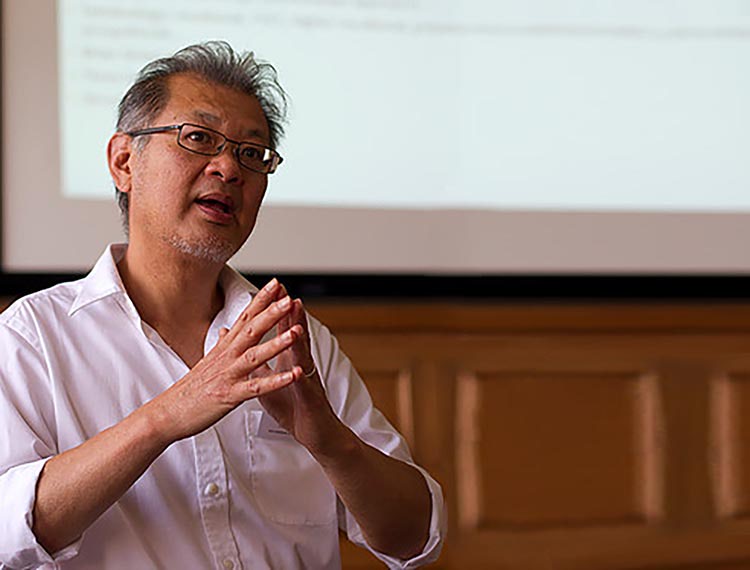Highways and byways: Pathways to becoming teacher educators

Further Education Teacher Educators
This series of three articles on further education (FE) teacher educators is based on the research monograph, Professional Development of Teacher Educators in Further Education (Loo, 2020)[1].
The first article examines the pathways to becoming educators[2].
Relevant literature sources
A teacher educator is “someone who provides instruction or who gives guidelines and support to student teachers, and who thus renders a substantial contribution to the development of students into competent teachers” (Koster et al., 2005, p. 157).
Teacher educator, as an area of research, is still relatively new and thus the literature sources on this topic are scant. Noel (2006) attempted to investigate the routes into teacher education in the FE sector using a survey. But, she confesses that this topic is not her main intention, and she accepts “becoming a teacher educator is unlikely to be an initial choice” (Noel, 2006, p. 162). However, Mayer et al. (2011) provide a more unintentional route base on their 19 participants in Australia, unlike Noel’s findings. To illustrate their results, terms such as ‘fell into’ and ‘chance meeting with’ the relevant stakeholders were given.
In this study, I use the notion of ‘intent’, intention’ or ‘intentionality’ to typologise the potential routes. Websites such as Cambridge English Dictionary and Merriam-Webster define these words as nouns with meanings associated with a plan or aim and may be accomplished with action. A person’s action can be described as an intended action. Opposite to this is ‘unintended activity’, i.e. one that is not planned, calculated or conscious. From these linguistic perspectives, I will classify the findings.
Findings
From the empirical data, the analysis provided three types of routes of these educators.
The pathways are:
- ‘unintended activity’
- ‘intended activity’, and
- ‘miscellaneous activity’.
‘Unintended activity’ refers to the pathway where 11 of the participants do not aim to be teacher educators initially, and in some cases, this may be changed to an intended one. Within this route, there are three sub-groups. I will only illustrate one sub-group: external intervention as exemplified by Teacher Educator (TE) 15:
It came out of the blue. I was asked to become a teacher educator by my Vice Principal at the time and asked to join the college team.
The ‘intended activity’ relates to the route where another 11 of the participants were conscious of aiming/wanting to be an educator. Again, there are three sub-types in this group. The ‘internal form of intended activity’ category is illustrated by TE31:
Started working with other tutors which I enjoyed very much. I wanted to do more work with my peers, which meant ITE or CPD and got a job in a college … this was a conscious choice
Of the third category, ‘miscellaneous activity’ pathway, there are two types. One of the types is called ‘cart before the horse’ (TE23), and the other, ‘reluctance, refusal and intentional’ (TE27).
Summary
There are three main groups of teacher educator pathways and eight sub-groups, and some of these are illustrated above. Due to the lack of previous research, this typology offers stakeholders such as teacher trainers, managers and policymakers insights into the unexplored pathways of these educators.
The next article studies the identities, and the third one provides a case study of an educator in the FE sector. By no means, these articles offer comprehensive descriptions of the relevant chapter in the book but tasters to provide readers with some insights.
Sai Loo, UCL Institute of Education, University College London
Sai Loo (PhD, MA, BSc, FHEA, ACA, FETC) has taught in FE and worked in industry as a Chartered Accountant. Sai has published over 120 articles, conference papers and keynotes (84 per cent are single-authored) including six research monographs with Routledge. His research area is ‘occupational education’ across teaching, learning and work settings from pre-university to professional education.
References:
Koster B, Brekelmans M, Korthagen F, Wubbels T (2005) Quality requirements for teacher educators. Teaching and Teacher Education, 21: 157–176.
Loo S (2020) Professional Development of Teacher Educators in Further Education: Pathways, Knowledge, Identities and Vocationalism. Abingdon: Routledge.
Mayer D, Mitchell J, Santoro N, White S (2011) Teacher educators and ‘accidental’ careers in academe: An Australian perspective. Journal of Education for Teaching, 37(3): 247–260.
Noel P (2006) The secret life of teacher educators: Becoming a teacher educator in the learning and skills sector. Journal of Vocational Education & Training, 58(2): 151–170.
[1] Findings of 33 participants, drawn from FE colleges, higher education institutions and private providers, who were or had been educators in the sector, were used. The data was captured from the survey, semi-structured interviews and Talking Heads (unstructured audio recordings). The eight researchers involved in this English project were Gordon Ade-Ojo, Heather Booth-Martin, John Bostock, Jim Crawley, Baiba Eberte, Sai Loo (Principal Investigator), Nicola Sowe and Sonia Spencer. In the book, issues of the educators such as teacher professionalism; profiles of the participants; pathways, initial disciplines and current titles of the participants; teacher educators’ knowledge; professional identities; professional education; and supporting case studies were investigated.
[2] Details of this article are based on the keynote presentation, ‘Professional Development of Teacher Educators in Further Education: Initial Disciplines and Journeys’, IJMCS-LSRN-TELL Collaborative Conference, 5 July 2019, University of Greenwich, London.











Responses